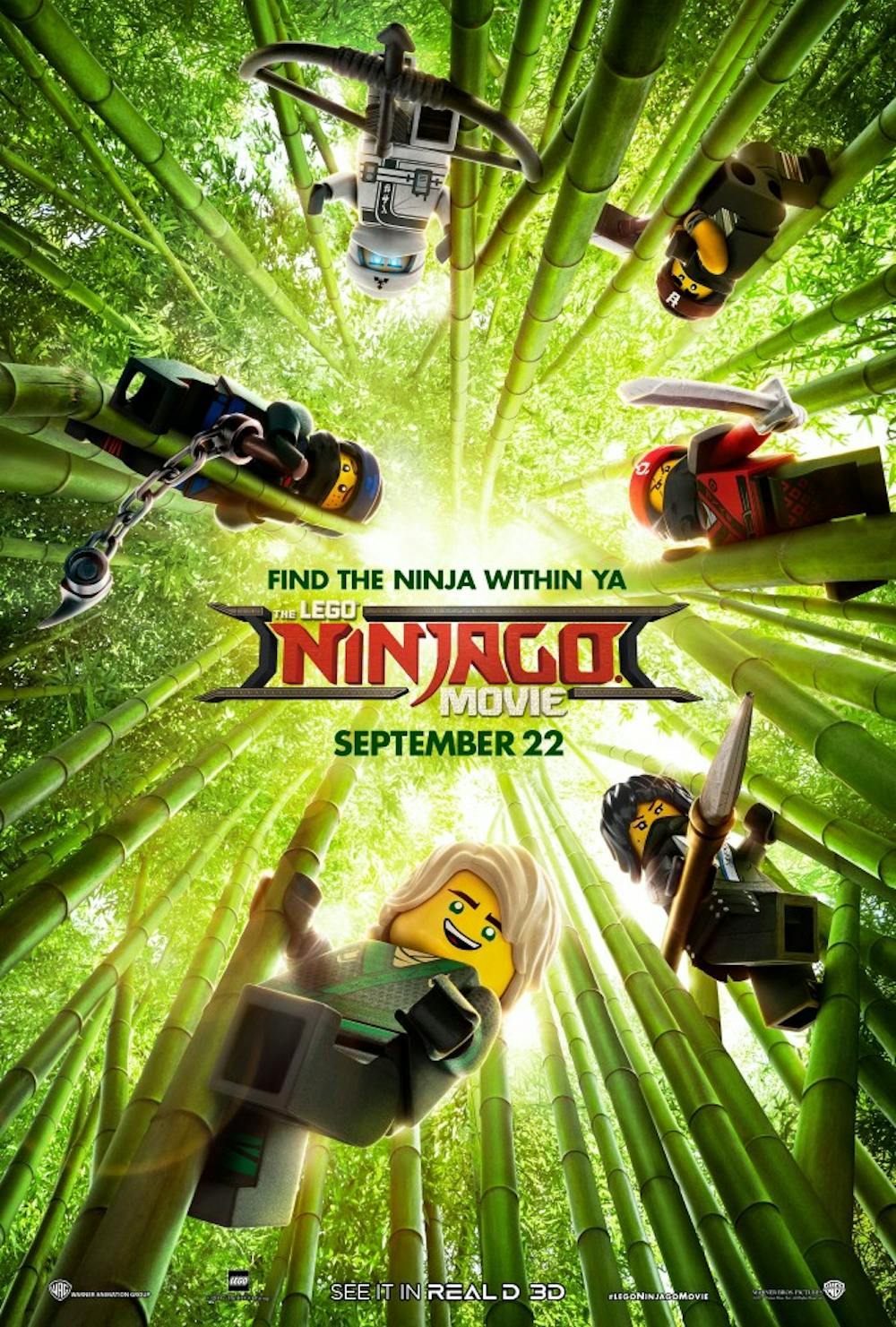“The LEGO Ninjago Movie” strives to recreate the magic and box office success of previous LEGO films, which utilized star studded casts, complex themes and absurdist humor. This same formula is attempted in “LEGO Ninjago,” yet the results prove the third time is not the charm.
Featuring Dave Franco, Jackie Chan, Justin Theroux and many other notable celebrities, the film is definitely not lacking in star power. The performances stand out as genuine and earnest amid a juvenile backdrop. Franco’s portrayal of Lloyd, the green ninja, incorporates heavy emotional involvement in the character while Kumail Nanjiani’s humor steals the scene in the film as Jay, the blue ninja.
Complexity in films targeted for a younger audience has become commonplace, especially in the LEGO franchise. “The LEGO Movie” and “The LEGO Batman Movie” revolved around outcasts struggling with acceptance in society — themes that are easily understood and relatable for a wide array of audiences. “LEGO Ninjago” attempts to add similar complexity to the film, yet misunderstands what made the previous films relatable.
Lloyd is the son of the villain, Garmadon (Justin Theroux), and is isolated from the rest of society because of this. Again, the franchise attempts to play with the idea of isolation and acceptance, yet in this version, these themes are presented in a laughably extreme manner.
Lloyd is not accepted in society because his father is an incredibly feared villain, an issue most people have not come across. “The LEGO Movie” utilizes such themes to question conformity and the embrace of one’s own identity despite the fear of standing out. “LEGO Batman” grapples with mourning and the isolation that loss can breed. “LEGO Ninjago” blames the isolation of its main character on his father, missing an opportunity for complexity that the previous films successfully employed.
The humor of “LEGO Ninjago” is also a big let-down. Previous LEGO films are rife with comedic gems and quotable moments as the LEGO animation feeds well into an absurdist comedic environment. Crazy characters and laughable puns are displayed in the form of innocent toys. The film is at its best when the LEGO world of Ninjago is on display.
Small jokes interweave the city in the first two films of the franchise, providing a humourous take on action and superhero films. Manic action and energy amidst the huge backdrop of the city provide a cornucopia of humor. However, this backdrop is quickly dropped in “LEGO Ninjago” in favor of an intimate journey featuring the major players. Sacrificing the absurdist ancillary LEGO characters ultimately leads to a diminished humor.
The film’s humor is incredibly dependent on breaking the barrier between reality and the LEGO world. The monster of the film is a real-life cat terrorizing the city of Ninjago. While this concept may be humorous for a short gag, the continuation of the joke throughout the film depleted any humor.
At times the film took surrealist breaks from the LEGO format in displaying manic shots of absurd images. This was played as a gag when a character mentioned the “ultimate weapon.” This again relies on the real world permeating the LEGO world of the film. While the LEGO format has proven to be the source of great humor, it is unfortunate to see it dropped in favor of a quicker and easier gag.
“The LEGO Ninjago Movie” stands apart from its predecessors. The humor falls flat and the story lacks the endearing complexity established in prior LEGO films. The appeal of the film is limited to that of a child.
Given that the film is, in fact, a children’s movie, such an appeal is not necessarily problematic. However, while the LEGO brand was initially represented as comedy with wide appeal — especially among adult audiences — in the first two films, “LEGO Ninjago” breaks from appealing to an older audience, and undermines the accomplishments of the previous LEGO films.







